🌱 I’m Sally Morgan, an organic gardener and botanist who loves to experiment. Here you can read about matters relating to climate change, sustainability, organic gardening and growing veg, helping you to become a climate savvy gardener 🌱☀️🌧️❄️🌡️
As we approach the end of January and start the Year of the Snake, I’m seeing lots of posts about spring being on the way. To my mind that’s rather early – there is plenty of winter weather to come I am sure. But it’s a good time to spend time in the garden, just walking around and looking, as its so much easier to assess structure and layers when the garden is bare of leaves and, mostly importantly, make notes and take photos.

While I know the overall look look and feel that I‘m trying to achieve in my garden in summer, I’m not very good at getting all year round interest and ground cover.
My friend Jean is much better. She is what I would call a plants woman, having worked in a plant nursery for many years. She has a tricky garden that’s narrow, on heavy Kimmeridge clay and is partly dominated by a large veteran apple tree that makes much of the garden quite shady in summer.
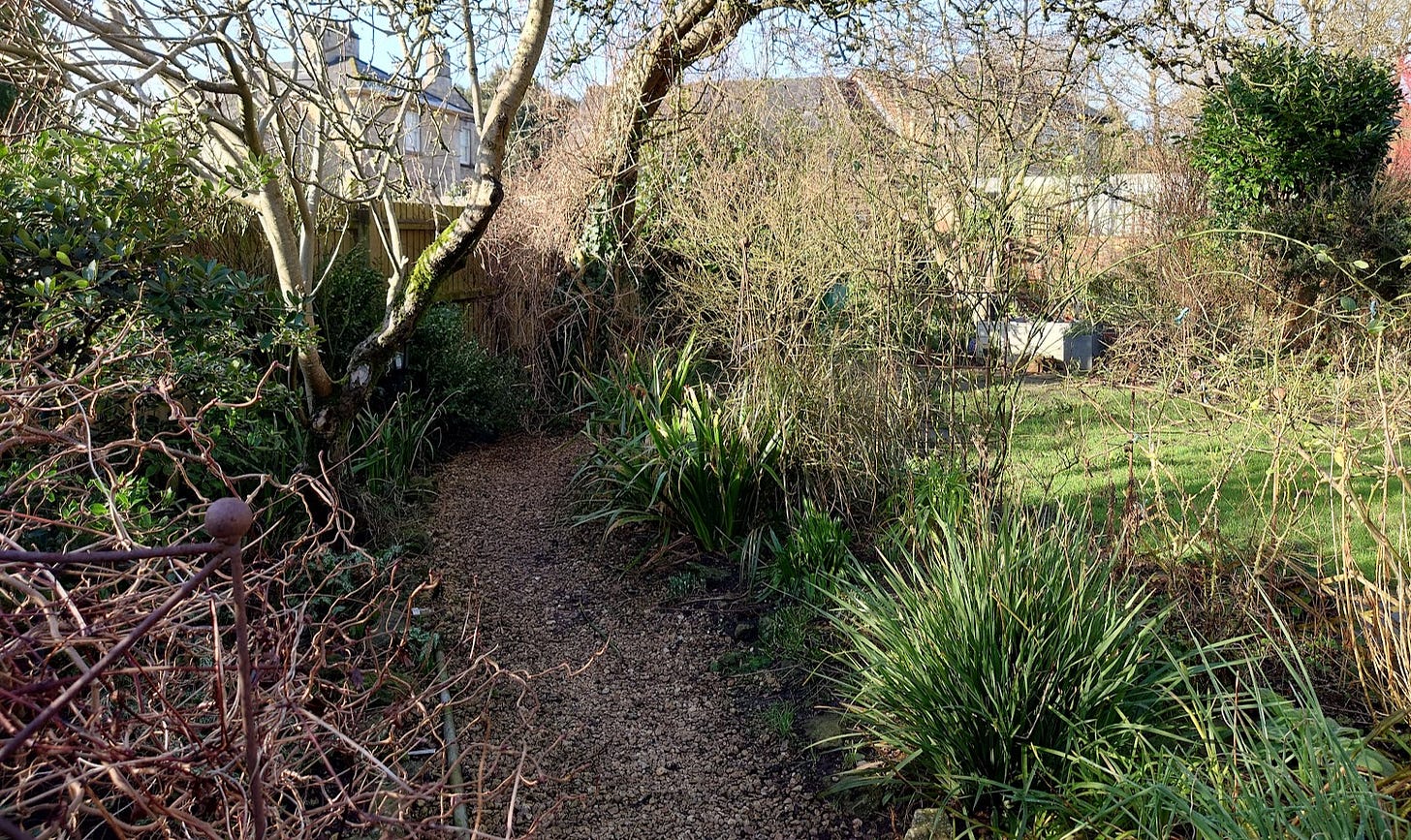
She has squeezed a lot of different plans into this space, creating year round interest, so I like to wander around it to get ideas. At this time of year, it’s easy to see how the carpets of snowdrops and other bulbs, hellebores, Brunnera and other plants will deliver colour and interest, as well protect the soil. Vertical structure comes from the shrubs and obelisks covered with roses and other climbing plants.
The other thing I noticed walking around my garden was a lack of flowers. I have worked hard in recent years to boost the floral diversity in the garden in February and March, but as I walked around at the end of January, there were very few flowers so I really need to address this. If we had a warm spell there would be little for bumblebees, solitary bees and other insects to forage on. My apricot flowers in February, so if its early, I don’t have much in the way of bribes to entice bumble bees into the garden.
I spotted sweetbox (Sarcococca confusa), Viburnum bodnantense, tree germander (Teucrium fruticans) pulmonaria, snowdrops, hellebores (ornamental and stinking), periwinkle, primroses and a few weeds – bittercress, dead red nettle, lesser celandine, and chickweed – so not a great haul.
I think a visit to a garden centre is in order to get some ideas of what I could add to the garden to give it a late winter boost. So on the possible list: winter flowering clematis, Cornus mas, winter honeysuckle, witch hazel, Mahonia.
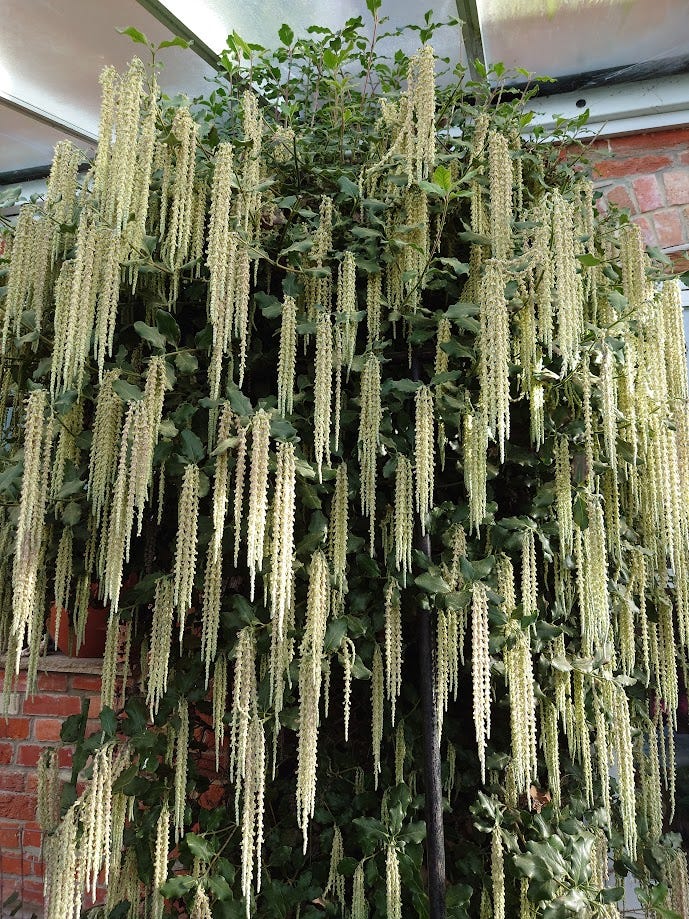
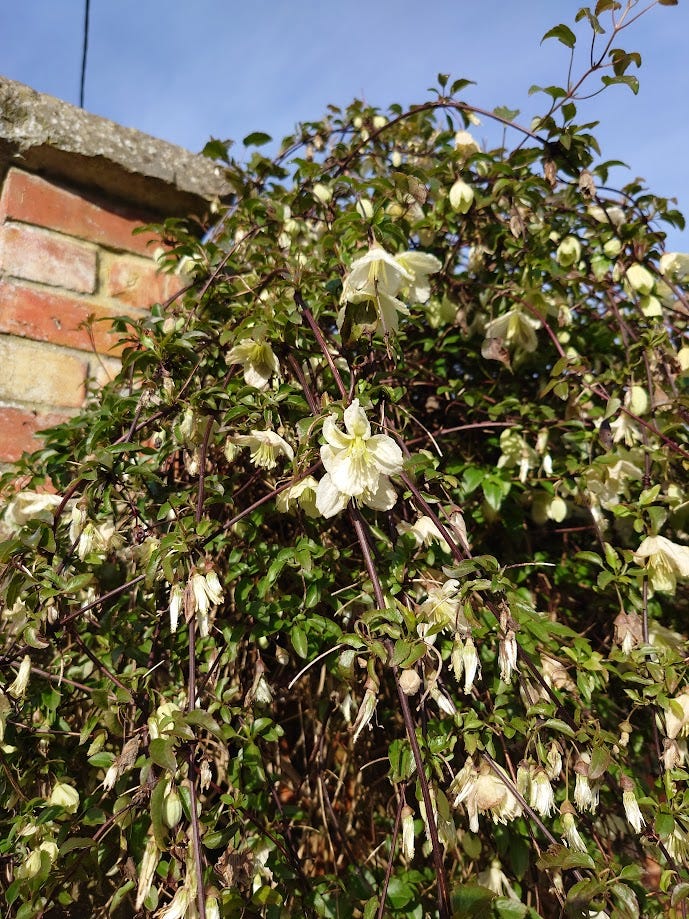
The back wall of the house is devoid of plants at the moment so I need to invest in some flowering quinces (Chaenomeles speciosa) to provide some spring flowers and nest sites for birds. I have always wanted a garrya, but I’m not sure if it would cope with the north facing aspect?
What’s the floral diversity looking like in your garden at the moment?

It’s also a good time to watch birds. At the weekend, I did my annual one hour bird count for the Big Garden Birdwatch and while I didn’t spot a large number of birds, there was a reasonable diversity, including a goldfinch that was busy hunting for seed in the old seedheads of phlomis that I leave standing in the garden and a wren that foraged in the leaf litter. I also spotted a grey wagtail by the rill, the first time I have seen one in the garden, and that alone made the hour so worth while.
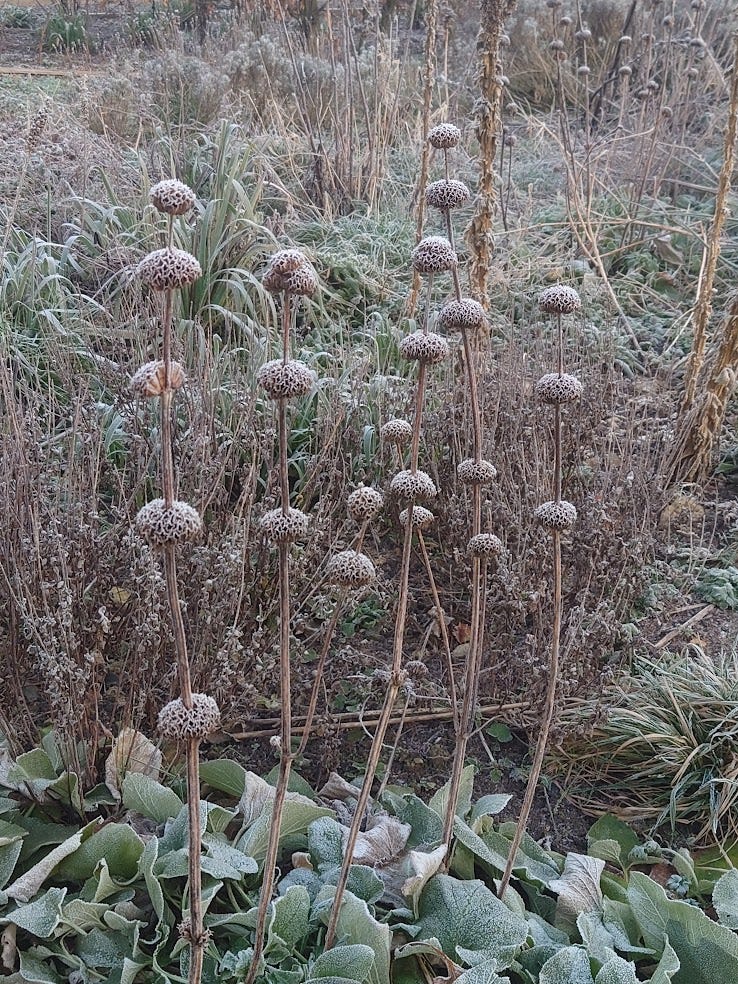
I also learned a lot by observing the birds moving through the garden. Watching them fly from shrub to shrub reminded me to add more “staging posts” to help them cross the garden from the boundary hedge. I always leave seedheads over winter, and the antics of the goldfinch showed clearly why having untidy beds in winter is the best wildlife friendly option, while leaving leaf litter over the soil benefits wrens, as well as protecting the soil.

Lots of photos of newly sown seed trays are popping up on my IG feed. While it’s still too early for most seeds, I’ve given in and sown a few peppers. Mine were slow to get going last year, with some not ripening until October, so I’m starting early. I’ll probably do the same for my aubergines, as they were late too, but everything else will wait until February or March.
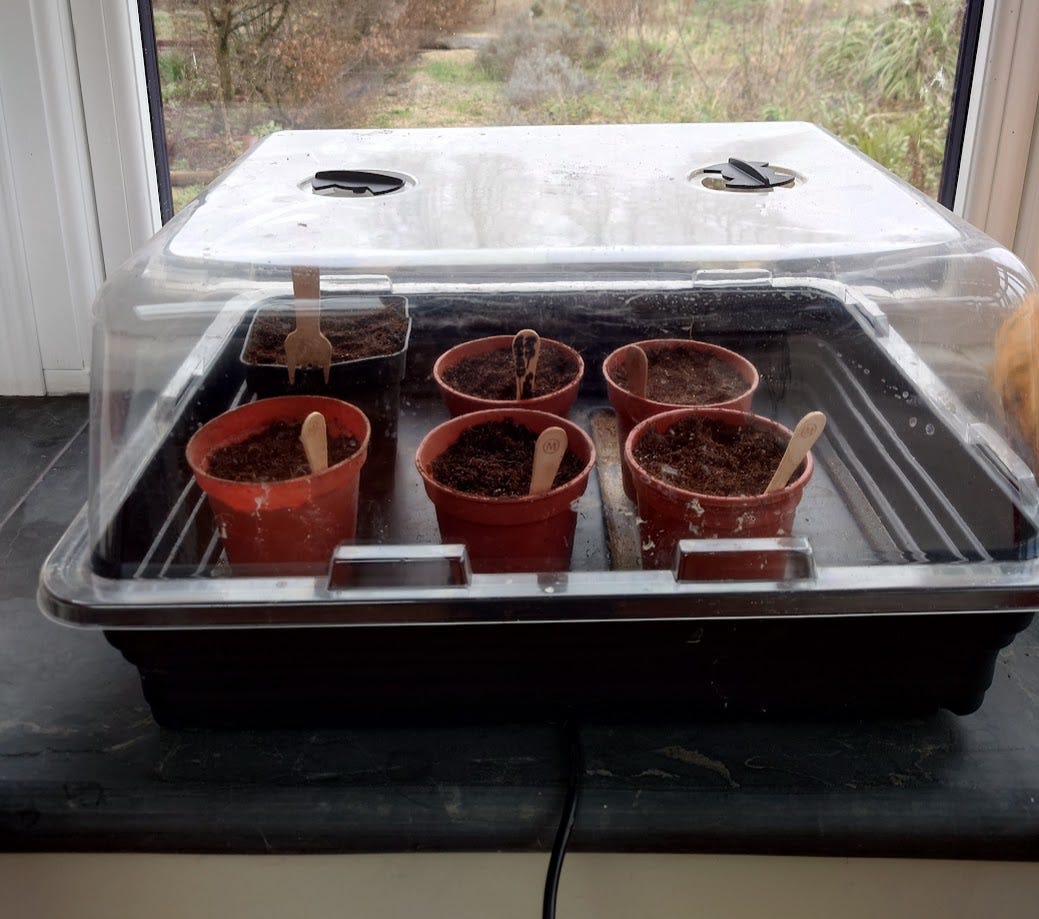
In the meantime, I’ve been organizing my seed collection. Instead of relying on guesswork, which usually leads to duplicate seed packets or none at all, I’ve made a definitive list of what I have.
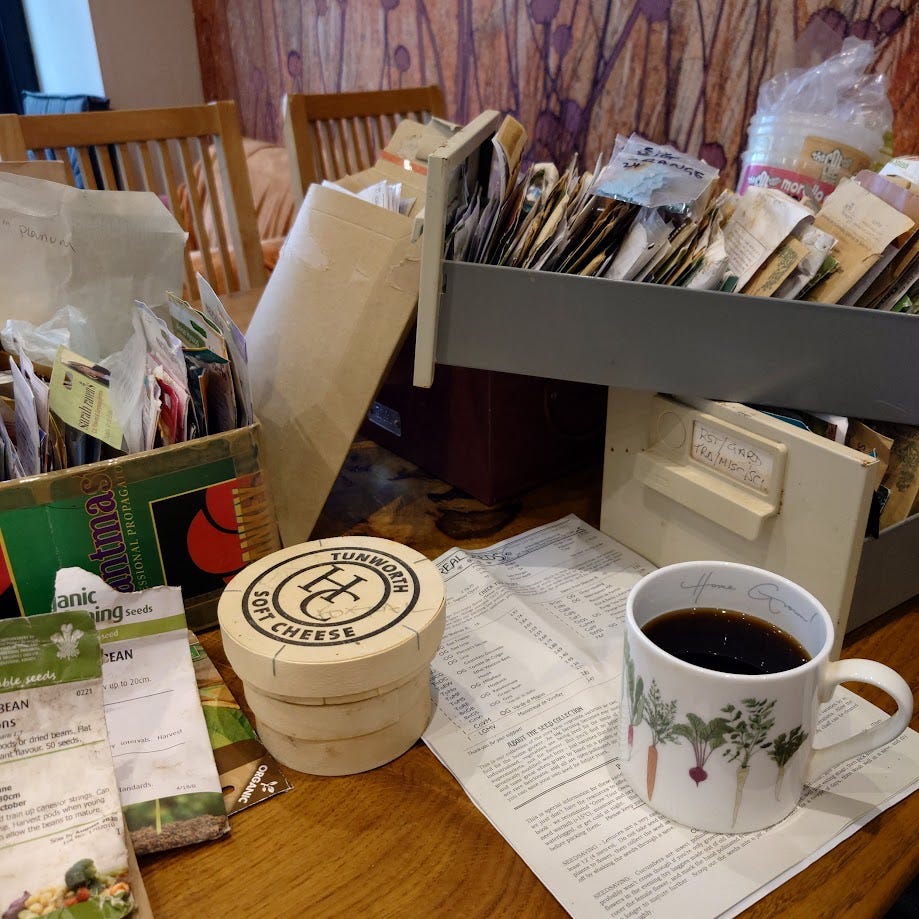
But what about my stock of older seeds? I have some old saved seeds that I can’t quite bring myself to throw away, just in case they’re still viable. So, before sowing, I test them to avoid wasting potting compost and waiting for weeks wondering if anything is going to appear.
It’s really easy to check viability. Just dampen a piece of kitchen paper, sprinkle on some seeds, fold it up, and place it in a plastic bag. After a few days or so (may take longer), check to see how many have germinated. If most sprout, they’re good to sow and I’ll probably keep the spare seed for another year or more. If the germination rate is poor, I’ll still sow them but at a higher seed rate, ensuring at least some will grow. However, I won’t keep the remaining seeds. I’ll grow some extra plants from which to save seed and restock my seed store.
If stored in a cool, dry place, some seeds can remain viable for years. I’ve successfully germinated 15-year-old peas! However, parsnip seeds need to be fresh, ideally just a year old, maybe two at most. Onion, leek, and sweetcorn seeds don’t store well either. But brassicas, squash, peas, beans, tomatoes, and cucumbers can last five years or longer.

Thank you to everybody who took time to answer my questions about climbing roses in last week’s post – you provided some really useful information. There is still time if you would like to comment!
PS If you enjoyed reading this post, please click the ‘❤️’ button at the bottom, it really helps to make my posts more visible on the SubStack app. Thank you xxx
If any of you get the Permaculture Magazine, you may have spotted my article on creating a resilient allotment. I was delighted to be invited to write for the magazine, so I hope readers of the magazine find it useful. There is also an article by Perrine Bulgheroni who I mentioned in my ORFC report. You can buy individual copies here
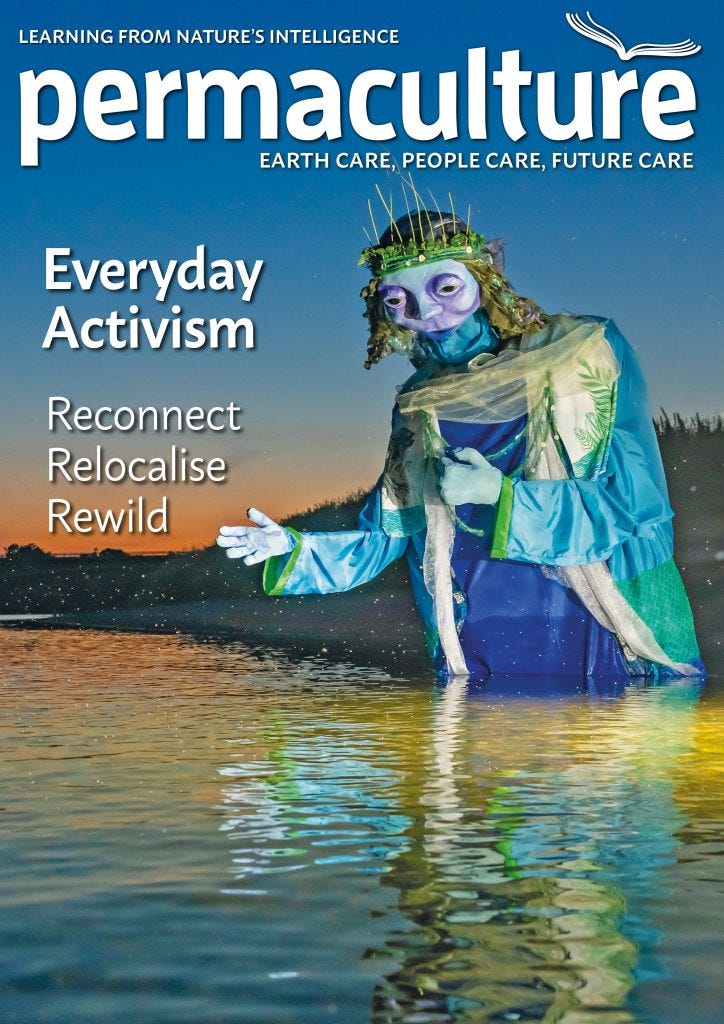
Talks in 2025
7 February Kicking off the year with a talk at Wanstrow nr Shepton Mallet on ‘Coping with Droughts and Flooding in your Garden’ Proceeds to Village Playing Field Fund. Tickets from Bob Sargent 07928521162
18 February North Perrott and Haselbury Gardening Club nr Crewkerne
6 March Morecombelake Garden Club near Bridport
14 April Llanthony Gardening Club nr Abergavenny
16 April Norton St Phillip Garden Club nr Bath

